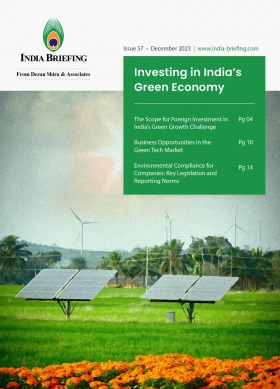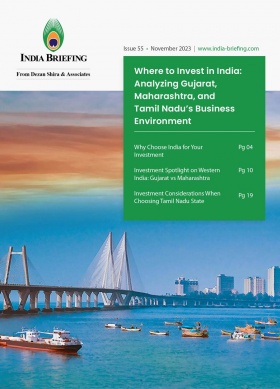India-EFTA Close to Finalizing a Free Trade Agreement
Reports have emerged that India and the European Free Trade Association (EFTA) have come to an understanding regarding the Trade and Economic Partnership Agreement (TEPA), which has been under discussion since 2008.
Per a Bloomberg story, the deal could see the small group of nations – Switzerland, Iceland, Liechtenstein, and Norway – invest as much as US$100 billion over 15 years in exchange for India’s market access. While India wants the EFTA members to commit to that number, European officials are more in favor of making it a goal and not legally binding.
Earlier this year, in January, Swiss Federal Councillor Guy Parmelin had visited Mumbai on a last-minute invitation by his Indian counterpart, commerce minister Piyush Goyal. They met and reached an agreement about the status of the India-EFTA TEPA treaty after 16 years of negotiation.
Status of negotiations
The EFTA nations and India have agreed to broad contours of the deal, including on patent protection, a contentious topic in the past. They have also agreed to include a new chapter on investment promotion. The discussions are yet to be concluded and, as such, both parties have agreed to not make any information public.
However, per a report in The Print, multiple Indian government departments are not in agreement with demands from EFTA nations Switzerland and Norway on provisions relating to pharmaceutical products. The foreign pharmaceutical firms are pushing for TRIPS-plus, an informal reference to intellectual property protection beyond the WTO’s TRIPS agreement, which India is currently compliant with. The opposing departments – health ministry and department of pharmaceuticals – fear TRIPS-plus clauses may restrict access to life-saving drugs and harm the local pharmaceutical industry. Other proposed provisions, per officials speaking to The Print, include regulatory data protection (RDP), or ‘data exclusivity’ for new drugs, that would prevent or delay regulators from using originator company data for approval of subsequent manufacturers. Such rules would necessitate changes to India’s regulatory policies under the Central Drugs Standard Control Organisation (CDSCO) as well as the Patents Act.
The 21st round of discussions to the EFTA TEPA was held in Delhi from January 8 to 13, 2024, which mainly focused on areas of trade in services, rules of origin, trade facilitation, investment promotion and cooperation, intellectual property rights, and trade and sustainable development.
India – EFTA trade
The overall amount of commerce between India and the EFTA nations has increased gradually over the last 20 years. The total value of commercial trade between the EFTA members and India exceeded US$6.1 billion in 2022. The biggest exports to India were pharmaceutical items (11.4 percent) and machinery (17.5 percent), while organic chemicals (27.5 percent) made up the majority of EFTA imports. Mutual direct investment (FDI) and bilateral trade in services have also grown significantly.
The focus of the proposed India-EFTA TEPA is on reduction of tariff on high-value goods, such as fish from Iceland and Norway, advanced chemicals and pharmaceuticals machine equipment, and Swiss chocolate. On its part, India is seeking to attract investments and get access for Indian goods in EFTA markets.
EFTA Trade with India: An overview from 2022

|
EFTA member |
Imports from India, 2022 |
Exports to India, 2022 |
|
Iceland |
|
|
|
Norway |
|
|
|
Switzerland |
|
|
|
India’s Trade with EFTA Nations, 2022 |
|
|
India’s imports from EFTA nations |
India’s exports to EFTA nations |
|
HS 84 Machinery, mechanical appliances – EUR 407 million |
HS 29 Organic chemicals – EUR 982 million |
|
HS 30 Pharmaceutical products – EUR 265 million |
HS 76 Aluminum and articles thereof – EUR 279 million |
|
HS 90 Optical, medical, surgical instruments – EUR 229 million |
HS 62 Woven apparel or clothing accessories – EUR 253 million |
|
HS 29 Organic chemicals – EUR 217 million |
HS 27 Mineral fuels, oil – EUR 214 million |
|
HS 85 Electrical machinery – EUR 212 million |
HS 61 Knitted apparel or clothing accessories – EUR 175 million |
|
Others – EUR 995 million |
Others – EUR 1,663 million |
Source: EFTA
Expected trade benefits under the EFTA TEPA deal
- The agreement will enable EFTA nations to export processed food and beverages, electrical machinery, and other engineering products to a potential market of 1.4 billion people at reduced tariffs. Additionally, the pharmaceutical and medical devices industry within the European bloc is expected to reap benefits from this deal.
- India, in turn, is seeking investments from EFTA nations in existing and new manufacturing projects, which could come either from the private sector or state-sponsored vehicles. The deal with the EFTA could also facilitate easier professional mobility for Indians in the bloc. Market access for agricultural products, such as rice – which is marginally grown in the region – would be another big gain for India.
India’s ongoing trade negotiations with other regions
Since India withdrew from the Regional Comprehensive Economic Partnership (RCEP) in 2019, the government has been vigorously pursuing trade agreements with various trade partners. New Delhi is simultaneously negotiating agreements with multiple countries and trade blocs to improve market access for Indian goods and services. These free trade agreements (FTAs) are crucial for competing against the likes of Bangladesh or Vietnam, which either enjoy tariff-free access or have an FTA in place with major economic groupings and markets.
In the last three years, India has expeditiously concluded three FTAs with Mauritius, the United Arab Emirates (UAE), and Australia following a period between 2012 to 2021, where no agreements were signed.
Currently trade negotiations are going on with the United Kingdom, Oman, European Union (EU), etc., with each agreement at a different stage of discussion.
India appears to be focusing on improving its access to developed markets, particularly in the Middle East and Western countries, and strengthening trade and investment ties with new emerging markets that are vital to its own industrial needs. Further, while in the past, trade negotiations were focused primarily on the movement of goods and services, non-tariff subjects have increasingly acquired more prominence as economies have transformed through technology applications, and new socio-economic and climate action priorities have emerged. Key non-tariff subjects seen in recent trade treaty discussions include digital trade, sustainability, environment, gender, small enterprises like MSMEs, etc. where the provisions could impact domestic regulations. India is also being increasingly pressed on IPR and investment protection norms. – Melissa Cyrill, Asia Briefing
|
FTA |
Status of treaty negotiations |
|
India – UK FTA |
Broad consensus reached but sticky issues remain an obstacle. May get delayed due to the upcoming Indian general election, to be held in April-May this year |
|
India – Oman FTA |
Reportedly in finalization stage; certain market access concerns remain |
|
India – EU FTA |
Unlikely to be concluded in 2024 |
|
India – EFTA FTA |
At a key stage of finalization |
|
India – Peru FTA |
Ongoing |
|
India – Israel FTA |
Ongoing |
|
India – Gulf cooperation council (GCC) FTA |
Ongoing |
|
India – Eurasian Economic Union (EEU) FTA |
Ongoing |
|
India – Southern African Custom Union (SACU) |
Ongoing |
|
India – Canada FTA |
Paused |
If India were to conclude a trade agreement with the EFTA grouping, it could set a favorable tone for deals with other partners and potentially be used as a template for future FTAs.
This article was originally published February 7, 2024. It was last updated February 8, 2024.
About Us
India Briefing is produced by Dezan Shira & Associates. The firm assists foreign investors throughout Asia from offices across the world, including in Delhi and Mumbai. Readers may write to india@dezshira.com for more support on doing business in India.
We also maintain offices or have alliance partners assisting foreign investors in Indonesia, Singapore, Vietnam, Philippines, Malaysia, Thailand, Bangladesh, Italy, Germany, and the United States.
- Previous Article Indiens Ausblick für 2024-25: Wichtige Wachstumsbereiche und Investitionsperspektiven
- Next Article Ongoing Red Sea Crisis Compels Global Shipping to Find New Routes







